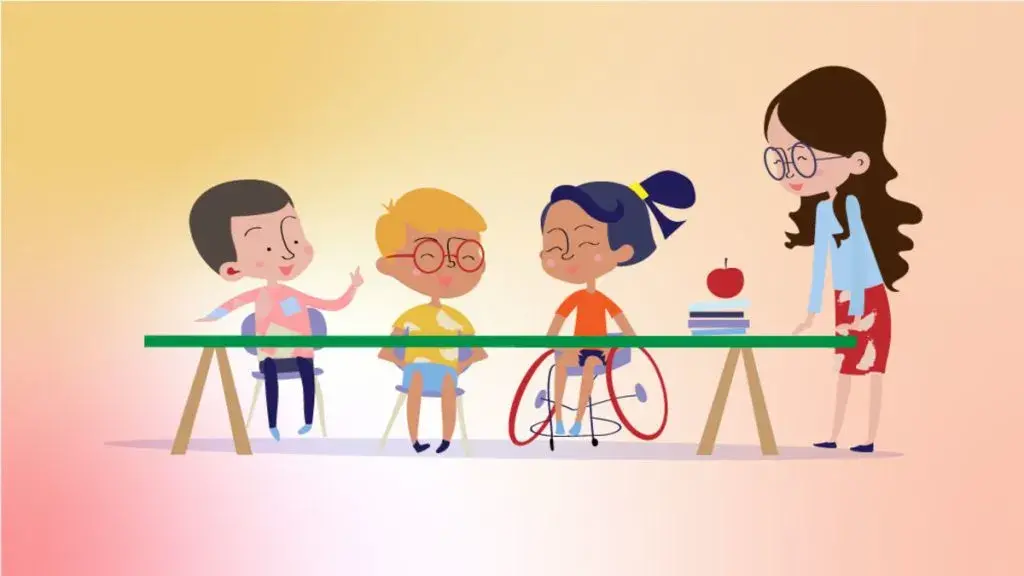ArdorComm Media Bureau
September 13, 2022
What exactly is inclusive education?
A classroom that is fair and inclusive fosters happiness and health. One of the best ways for teachers to maintain the finest learning environments in their classrooms is to use inclusive education. The term “inclusive education” refers to a teaching approach where all students, regardless of aptitude, learn together in the same setting. An inclusive learning environment aims to guarantee that all students receive fair treatment and equal chances. Student diversity and individuality should be valued in an inclusive learning environment without prejudice.
Sadly, there are still cases where children are given different treatment because of their individual characteristics. No student should be excluded or put in a separate group based on how they differ from one another or how well they study. In addition, if students knew what to watch out for, no teacher would ever consider doing this. Disability, colour, gender, family income, and language are just a few of the things that cause discrimination against students. The goal of inclusive education is to eliminate prejudice against all students.
These problems exist not only in traditional classroom settings but also in online and mixed learning settings. According to studies, there are more pupils with disabilities than ever before. All students have a right to education; thus, we must be prepared to accommodate them and grant them equitable access.
Inclusive education types:
Since every student is unique, they each have different needs. It’s critical to select the appropriate inclusive education programme for your students depending on their unique needs.
Complete inclusion
This instructional strategy is based on the idea that all students should be in the main classroom. According to a complete inclusion paradigm, students with obvious or subtle disabilities will always collaborate with their peers. If a school is utilising the full inclusion model, they must closely evaluate student development and make sure the strategy is beneficial to the students. A partial inclusion plan can be used if a complete inclusion plan would be too much.
Partial inclusion
All students should be able to participate in class activities and learn from them, according to this teaching strategy. However, for students who require extra support outside of the classroom, partial inclusion also includes separated learning. The majority of the learning time for children who are a part of a partial inclusion plan will still be spent in the regular classroom. They will, nonetheless, also spend some time apart from the regular class receiving extra assistance from special education teachers. Speech-based lessons, for instance, could be disruptive if they were conducted in the main classroom as part of the supplementary help. When it would be better for all students to be separated from one another in the classroom, partial inclusion is more flexible and allows it.
Mainstreaming
The mainstreaming approach places impaired children in a separate classroom from the regular classroom to start their educational journey. Depending on their readiness, children who are performing well in their independent classroom can be moved into the larger classroom. Some children may find this approach less intimidating, and it enables them to gradually integrate into a fully inclusive classroom.
Why inclusive education is important?
The wellbeing of students can be significantly enhanced by a warm and inclusive learning environment. So, what makes inclusive education so crucial?
To increase confidence among students
Traditional approaches to working with students who have disabilities or learning challenges might negatively affect a student’s sense of self-worth. The idea that they are different and should be treated differently is pushed by dividing them into smaller groups and instructing them outside of the main classroom. We must be vigilant and try to counter this because research has shown that children with learning difficulties have lower self-esteem than those without.
Students will hopefully experience a feeling of belonging and engage in fruitful peer interactions by being given the chance to mix and be a part of the class. However, there are times when children might require extra aid outside of the classroom, such as after-school sessions for assistance with particular subjects. This does not preclude them from spending the most of their schooldays in the main classroom. Partial inclusion may be preferable than full inclusion in situations where students might benefit from receiving instruction outside of the main classroom for specific reasons.
To enhance communication abilities
All students can develop their interpersonal communication skills in an inclusive classroom. If students were divided into different groups, their social networks would be substantially narrower and they would have less chance to engage with other students. Students can interact with more students in an integrated classroom who have a range of skills. They will have more chances to improve their communication skills and adjust to various types of social interaction as a result.
Additionally, by doing this, students will be career-ready and better prepared for life beyond school. Students will work alongside various groups with a range of abilities once they reach the industry. It simply makes sense to prepare them for that and replicate the classroom setting.
For ensuring educational excellence
Equal access to a top-notch education from their neighbourhood schools should be granted to all children. You can guarantee that all students receive an equal education by providing an inclusive learning environment in the classroom. The teachings taught in these smaller, distinct classes for impaired children may differ from those taught in the regular classroom.
By teaching everyone together, it is guaranteed that no student will miss any of the material. Being taught by the same teachers can guarantee that all students have equal access to the course information despite the fact that teachers will have varying teaching methods and pacing.
Despite this, teachers should continue to modify their lessons to meet the requirements of all students. Each student’s educational needs can be satisfied through differentiated learning opportunities, which also improve learning environments and enable students to attain their full potential.
The author, Pratik Ghosh is associated with ArdorComm Media


